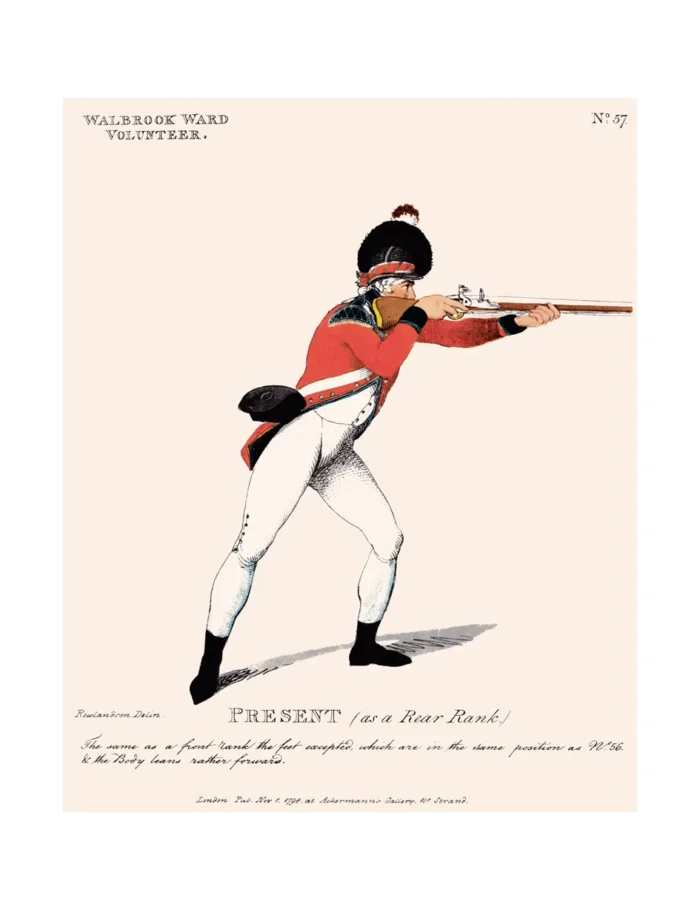No. 57 Walbrook Ward Volunteer
£12.00
Walbrook Ward (scroll down for a more detailed Description)
The first reprints of the 1798 aquatints by Thomas Rowlandson (published by Rudolph Ackermann) published in 1972 by Hugh Evelyn Limited.
Image size is 20.5 x 25.5 cm [8” x 10”] against a light greyish orange background (c. RGB fcf2e1) impressed on medium high white matt cartridge paper of c. 120 g/m2.
Print size: c. 26.2 x 33.7 cm [17” x 12 ¾”] may vary slightly from printers’ cut 50 years ago
Details of London Wards and Parishes provided by © the British Library
We offer thanks to the Trustees of the British Library and British Museum and Wikipedia for some text (and map outlines
Print is STANDARD size – shipping is the same for 1 to 10 prints (based on largest print size in your order) – see Shipping & Returns
Who were the Loyal Volunteers ? See here
In stock
- Satisfaction Guaranteed
- No Hassle Refunds (see Shipping and returns)
- Secure Payments
Description


Walbrook is a City ward and a minor street in its vicinity. The ward is named after a river of the same name. (see maps – click to enlarge). The ward of Walbrook contains two of the City’s most notable landmarks: the Bank of England and the Mansion House. The street runs between Cannon Street and Bank junction, though vehicular traffic can only access it via Bucklersbury, a nearby side-road off Queen Victoria Street. A street called Walbrook runs along the lower part of the brook’s course. A valley is clearly visible; this can be seen most clearly at the junction of Walbrook and Cannon Street.[1] On the street is the church of St Stephen Walbrook, which originally stood on the west bank of the stream, but was rebuilt around 1439 on the east side. In 1666 the church was destroyed in the Great Fire of London; Christopher Wren built a new church there in 1672, which still stands, to replace it. The Bank of England and the Mansion House, the official residence of the Lord Mayor, are both situated in Walbrook ward, as is the historic London Stone (the latter situated on Cannon Street).
Walbrook is one of 25 wards in the City of London, each electing an Alderman and Commoners (the City equivalent of a Councillor) to the Court of Common Council of the City of London Corporation. Only electors who are Freemen of the City of London are eligible to stand.
Additional information
| Weight | 0.0121 kg |
|---|---|
| Dimensions | 25.5 × 32.5 cm |




